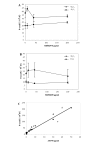DNA damage and cytotoxicity in type II lung epithelial (A549) cell cultures after exposure to diesel exhaust and urban street particles
- PMID: 18397523
- PMCID: PMC2323018
- DOI: 10.1186/1743-8977-5-6
DNA damage and cytotoxicity in type II lung epithelial (A549) cell cultures after exposure to diesel exhaust and urban street particles
Abstract
Background: Exposure to air pollution particles has been acknowledged to be associated with excess generation of oxidative damage to DNA in experimental model systems and humans. The use of standard reference material (SRM), such as SRM1650 and SRM2975, is advantageous because experiments can be reproduced independently, but exposure to such samples may not mimic the effects observed after exposure to authentic air pollution particles. This study was designed to compare the DNA oxidizing effects of authentic street particles with SRM1650 and SRM2975. The authentic street particles were collected at a traffic intensive road in Copenhagen, Denmark.
Results: All of the particles generated strand breaks and oxidized purines in A549 lung epithelial cells in a dose-dependent manner and there were no overt differences in their potency. The exposures also yielded dose-dependent increase of cytotoxicity (as lactate dehydrogenase release) and reduced colony forming ability with slightly stronger cytotoxicity of SRM1650 than of the other particles. In contrast, only the authentic street particles were able to generate 8-oxo-7,8-dihydro-2'-deoxyguanosine (8-oxodG) in calf thymus DNA, which might be due to the much higher level of transition metals.
Conclusion: Authentic street particles and SRMs differ in their ability to oxidize DNA in a cell-free environment, whereas cell culture experiments indicate that the particle preparations elicit a similar alteration of the level of DNA damage and small differences in cytotoxicity. Although it cannot be ruled out that SRMs and authentic street particles might elicit different effects in animal experimental models, this study indicates that on the cellular level, SRM1650 and SRM2975 are suitable surrogate samples for the study of authentic street particles.
Figures





References
LinkOut - more resources
Full Text Sources
Other Literature Sources

